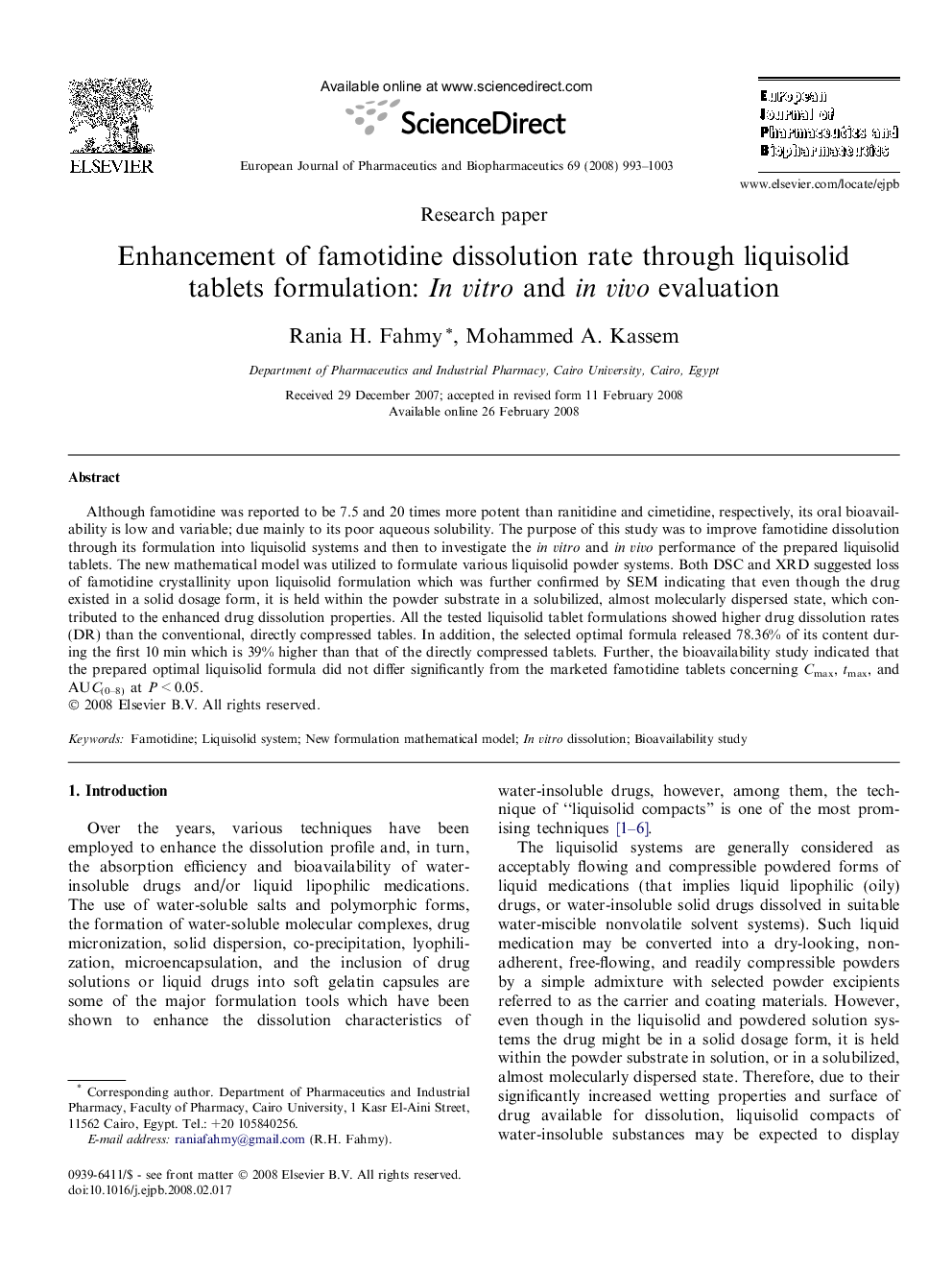| Article ID | Journal | Published Year | Pages | File Type |
|---|---|---|---|---|
| 2084613 | European Journal of Pharmaceutics and Biopharmaceutics | 2008 | 11 Pages |
Although famotidine was reported to be 7.5 and 20 times more potent than ranitidine and cimetidine, respectively, its oral bioavailability is low and variable; due mainly to its poor aqueous solubility. The purpose of this study was to improve famotidine dissolution through its formulation into liquisolid systems and then to investigate the in vitro and in vivo performance of the prepared liquisolid tablets. The new mathematical model was utilized to formulate various liquisolid powder systems. Both DSC and XRD suggested loss of famotidine crystallinity upon liquisolid formulation which was further confirmed by SEM indicating that even though the drug existed in a solid dosage form, it is held within the powder substrate in a solubilized, almost molecularly dispersed state, which contributed to the enhanced drug dissolution properties. All the tested liquisolid tablet formulations showed higher drug dissolution rates (DR) than the conventional, directly compressed tables. In addition, the selected optimal formula released 78.36% of its content during the first 10 min which is 39% higher than that of the directly compressed tablets. Further, the bioavailability study indicated that the prepared optimal liquisolid formula did not differ significantly from the marketed famotidine tablets concerning Cmax, tmax, and AUC(0–8) at P < 0.05.
